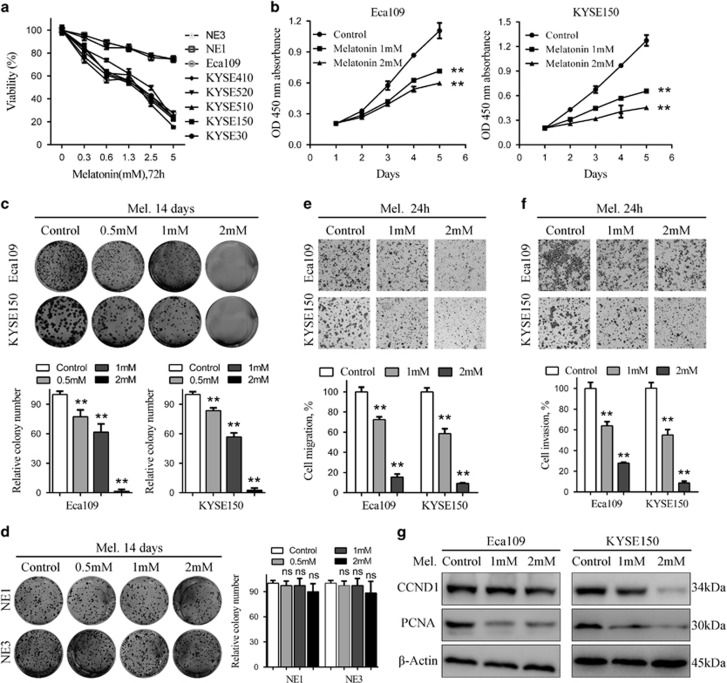Figure 1.
Melatonin inhibits proliferation, colony formation, migration and invasion of ESCC cells. (a) Viability of the indicated cells exposed to melatonin at different concentrations (72 h) was detected with MTS kit. (b) MTS assay of Eca109 (left panel) and KYSE150 (right panel) cells treated with melatonin (Control, 1 mM or 2 mM) at indicated time points. (c) Representative images (upper panel) and quantification (lower panel) of colony formation of the indicated cells cultured with melatonin at different concentrations for 14 days. (d) Representative images (left panel) and quantification (right panel) of colony formation of NE1 and NE3 cells cultured with melatonin at different concentrations for 14 days. Representative images and quantification of migration (e) and invasion (f) assay of the indicated cells treated with melatonin (Control, 1 mM or 2 mM) for 24 h. (g) Immunoblotting of CCND1, PCNA of cell extracts from Eca109 and KYSE150 cells after treated with indicated concentrations of melatonin for 24 h. β-Actin was used as loading control. Data in (a), (b), (c), (d), (e) and (f) are presented as mean±S.E. derived from three individual experiments with triplicate wells. **P<0.01 versus corresponding control. ns, no significant. Error bars, S.E.

